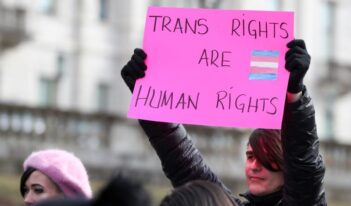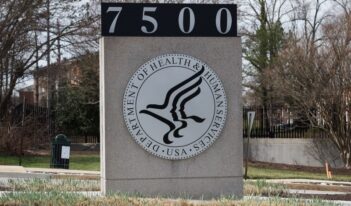
Despite political assurances, nothing has changed legally in the contraceptive insurance controversy.
In Friday’s highly publicized announcement, President Obama may have helped contain the political firestorm over the new federal mandate that health plans cover contraceptives. But the embers are still hot. And legally speaking, nothing has changed. On Friday, the Department of Health and Human Services (HHS) issued a final rule that looks just like what it announced on January 20 – the very announcement that set off the recent firestorm.
Americans could be forgiven for thinking the Obama administration had changed policy on Friday. The original HHS announcement, recall, had said religious nonprofit institutions would have an additional year to comply with the mandate. Admitting the issue had become a “political football,” the President said that “it became clear that spending months hammering out a solution was not going to be an option, that we needed to move this faster.” He said he told HHS, “We weren’t going to spend a year doing this; we’re going to spend a week or two doing this.”
So when the president announced that “we’ve reached a decision on how to move forward,” he sounded resolute. He definitively laid out the compromise that, “[u]nder the rule” he was announcing, insurance companies rather than religious nonprofits would need to pay for contraceptives. He said this approach would achieve the right balance between contraceptive access and religious freedom.
Speaking to CNN just after the president’s announcement, HHS Secretary Kathleen Sebelius stated, “We’re pleased to announce that the final rule, which will be published later this afternoon, will include this important balance.” She reiterated that “as of the end of today the rule will be finalized.”
But the rule HHS finalized on Friday actually put in place nothing like what the president announced. On the contrary, the final rule enacts the very same terms that HHS had announced on January 20th. Churches are exempt from the mandate but the only concession religious nonprofits receive is the promised one-year “enforcement safe haven.” An accompanying guidance, also released Friday, would make the safe haven contingent on a nonprofit completing a certification and providing written notice to its employees that its health plan provides no coverage for contraceptives.
In an explanatory preamble to Friday’s final rule, HHS did state that it plans to “work with stakeholders” on a separate rulemaking that would enact the compromise the President announced and even “to develop policies to achieve the same goals for self-insured group health plans.” But it is clear that the federal government has not even begun to initiate this new rulemaking; it only “will work with stakeholders to propose and finalize this policy before the end of the temporary enforcement safe harbor.”
For now, nothing has changed except that the very policy that triggered the recent controversy has now been put into law. As Secretary Sebelius said on CNN, “We announced from the beginning that we were going to work with stakeholders.”
Yes, the president has articulated a clear direction forward, and in doing so he may well have done the best he could do, politically speaking. But undoubtedly Republicans in Congress and on the presidential campaign trail will continue to try to make an issue of the contraceptive coverage mandate. The fact that nothing has really changed will only make it that much harder for President Obama to put this issue behind him for good.




